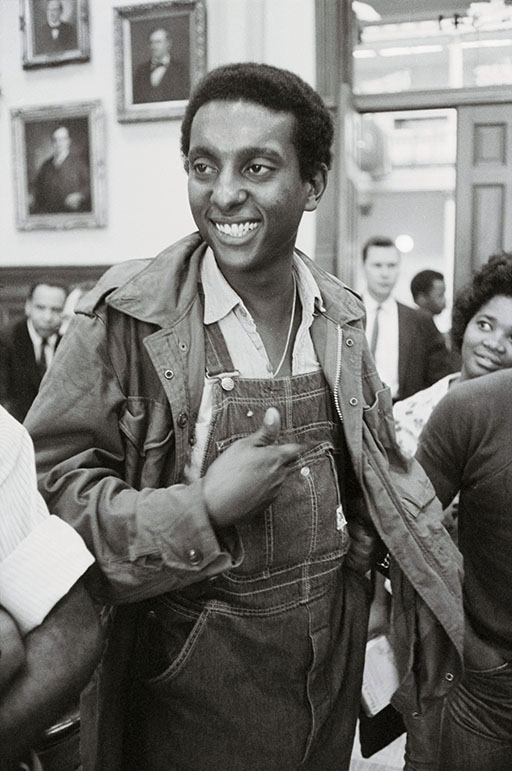9 ‘Black Power’
By this stage, the civil rights movement had begun to splinter. Since the early 1960s, tensions had been growing between some of the younger, more radical members of the SNCC and the older, more moderate leaders of the civil rights movement. Meanwhile, other Black rights activists – such as Malcolm X, a spokesman for the Nation of Islam – had denounced King’s message of racial integration. Despite the legislative gains of 1964 and 1965, many activists also lamented that change had been slow, while racial inequalities persisted. Some SNCC members began to abandon their belief in non-violence, adopting more revolutionary language, especially after Stokely Carmichael became their leader in 1966.

Carmichael was a longstanding SNCC activist who had participated in the Freedom Rides and the march on Selma. His beliefs by this stage were encapsulated by the slogan ‘Black Power’, which he had popularised amongst young SNCC activists. When campaigning in Mississippi in 1966, he addressed a rally, exclaiming that ‘The only way we gonna stop them White men from whuppin’ us is to take over. What we gonna start saying now is Black Power!’ (cited in Joseph, 2006, p. 2). ‘Black Power’ became a rallying cry for many Black rights activists across the country, and marked a significant departure from the emphasis on interracial cooperation that had characterised the earlier civil rights movement. From here on, the influence of the older civil rights leaders began to wane.
